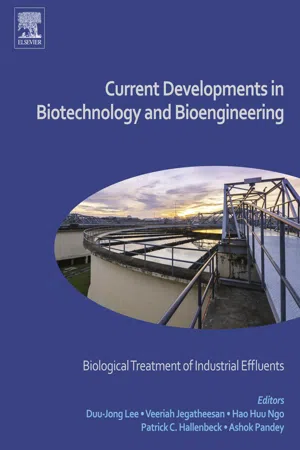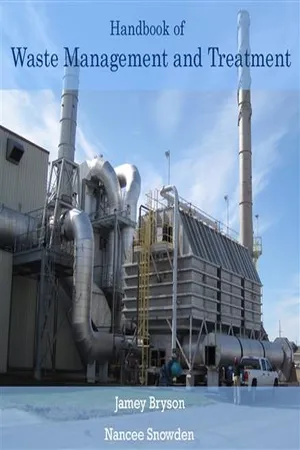Biological Sciences
Aerobic vs Anaerobic Bacteria
Aerobic bacteria require oxygen to grow and survive, using it as a final electron acceptor in their metabolic processes. In contrast, anaerobic bacteria can grow and survive in the absence of oxygen, using alternative electron acceptors such as nitrate or sulfate. This fundamental difference in oxygen requirements influences the types of environments where these bacteria can thrive.
Written by Perlego with AI-assistance
Related key terms
1 of 5
9 Key excerpts on "Aerobic vs Anaerobic Bacteria"
- eBook - PDF
- Urvashi Swami(Author)
- 2020(Publication Date)
- Delve Publishing(Publisher)
Most aerobic bacteria are widely used in the soil so as to enable nitrification and oxidation of sulfur. These processes are very important for the stability of the soil, plants and their environment. For instance, sulfur-oxidizing bacteria are needed to remove excess sulfur compounds in the soil which may otherwise contaminate the environment especially groundwater poisoning. In conclusion, it is important to note that both aerobic and anaerobic bacteria have their harm and benefits in equal measure. It is therefore important to maintain anaerobic and aerobic bacteria in the soil because of their benefits both to man and to the environment outdo their harm. 3.4.6 Actinobacteria This type of bacteria is commonly found in torrential and aquatic environments. The major role of these soil bacteria is to decompose organic matter into soil nutrients that can be absorbed by plants. Majorly, they act as organic matter decomposers. Soil Bacteria 63 Main features; • Most actinobacteria are aerobic and unicellular who form aerial and substrate mycelium. • Soil actinobacteria reproduce by binary fusion while producing spores. • Soil can be described as being conical and compact in appearance. • They can be classified into thermophilic, acidophilic and symbiotic actinobacteria among other groups based on their ecosystem’s food and characteristics. • Actinobacteria have a high content of cytosine in their DNA. • They are largely a group of Gram-positive bacteria. • Actinobacteria though they lack a cell wall they produce mycelia which areslender and has no septa. Actinobacteria live in soils with very high sensitivity to low pH and acid. Studies show that most actinobacteria avoid environments that are believed to have low pH i.e. - eBook - ePub
Current Developments in Biotechnology and Bioengineering
Biological Treatment of Industrial Effluents
- Duu-Jong Lee, Patrick C. Hallenbeck, Huu Hao Ngo, Veeriah Jegatheesan, Ashok Pandey(Authors)
- 2016(Publication Date)
- Elsevier(Publisher)
8Anaerobic Treatment Versus Aerobic Treatment
K.-Y. Show1 , and D.-J. Lee2 , 3 , ∗1 Zhejiang Juneng Co. Ltd., Tongxiang, China2 National Taiwan University, Taipei, Taiwan3 National Taiwan University of Science and Technology, Taipei, TaiwanAbstract
Biological processes are well perceived as cost-effective and environmental friendly methods for wastewater treatment. While a major advantage of the aerobic processes is their capacity to handle a wide variety of low-strength soluble wastewaters, anaerobic microbial communities are superior specifically at high temperatures and high concentrations of soluble and insoluble wastes. It is worthwhile to evaluate to what extent both aerobic and anaerobic technologies are currently evolving, either as direct competitors or as complementary treatments to one another. Important progress can be expected with regard to synergistic linkages between anaerobic and aerobic processes to cope with increasingly stringent environmental controls and regulations. This review provides an up-to-date account of microbial metabolism and a comparison of aerobic and anaerobic treatments as well as their merits. Challenges and new horizons are also presented.Keywords
Aerobic; Anaerobic; Challenge; Comparison; Merit; Metabolism; New horizon; Treatment8.1. Microbial Metabolism
Microbial metabolism in wastewater treatment involves the use of microorganisms to consume organic matter as substrate. Biodegradable organics are metabolized and converted into carbon dioxide, water, and energy for growth, cell maintenance, and reproduction of the microorganisms. In actual fact, microbial metabolism is the overall biochemical processes that are employed in the destruction of organic compounds, or so-called catabolism, and in the building up of cell protoplasm, termed anabolism. These processes convert chemically bound energy from the organics into energy forms that can be used for microbial life-sustaining processes. Catabolism represents the oxidative, exothermic, enzymatic degradation process that results in the release of free energy from the organic substances. Some of the released energy is available for the construction of new cellular material through anabolism, which is a synthetic process that results in an increase in size and complexity of organic chemical structure [1] - No longer available |Learn more
- (Author)
- 2014(Publication Date)
- College Publishing House(Publisher)
Different species of bacteria are able to survive at different temperature ranges. Ones living optimally at temperatures between 35–40 °C are called mesophiles or mesophilic bacteria. Some of the bacteria can survive at the hotter and more hostile conditions of 55– 60 °C, these are called thermophiles or thermophilic bacteria. Methanogens come from the domain of archaea. This family includes species that can grow in the hostile conditions of hydrothermal vents. These species are more resistant to heat and can therefore operate at high temperatures, a property that is unique to thermophiles. As with aerobic systems the bacteria in anaerobic systems the growing and reproducing microorganisms within them require a source of elemental oxygen to survive. In an anaerobic system there is an absence of gaseous oxygen. Gaseous oxygen is prevented from entering the system through physical containment in sealed tanks. Anaerobes access oxygen from sources other than the surrounding air. The oxygen source for these microorganisms can be the organic material itself or alternatively may be supplied by inorganic oxides from within the input material. When the oxygen source in an anaerobic system is derived from the organic material itself, then the 'intermediate' end products are primarily alcohols, aldehydes, and organic acids plus carbon dioxide. In the presence of specialised methanogens, the intermediates are converted to the 'final' end products of methane, carbon dioxide with trace levels of hydrogen sulfide. In an anaerobic system the majority of the chemical energy contained within the starting material is released by methanogenic bacteria as methane. Populations of anaerobic microorganisms typically take a significant period of time to establish themselves to be fully effective. - eBook - PDF
Anaerobic Sewage Treatment
Optimization of process and physical design of anaerobic and complementary processes
- Jeroen van der Lubbe, Adrianus van Haandel(Authors)
- 2019(Publication Date)
- IWA Publishing(Publisher)
© IWA Publishing 2019. Anaerobic Sewage Treatment: Optimization of Process and Physical Design of Anaerobic and Complementary Processes Editor(s): Adrianus van Haandel and Jeroen van der Lubbe doi: 10.2166/9781780409627_0029 2�1 BACTERIAL METABOLISM One of the most important objectives in wastewater treatment is the removal of organic material, a task almost invariably performed by biological processes because these are more reliable and economical. Organic material in wastewater is unstable, i.e. it tends to decompose into simpler organic or inorganic compounds. In biological wastewater treatment systems, micro-organisms are responsible for the degradation or stabilization of organic material. Micro-organisms can be divided into two groups according to the structuring of their genetic material within the cells: prokaryotes and eukaryotes ( Bitton, 2005 ). Prokaryotes in turn can be divided into two groups, bacteria and archaea, which are the most important micro-organisms in treatment systems. It was only relatively recently that archaea were recognized as a specific group of micro-organisms and in many publications archaea are mistaken for bacteria. However, for purposes of design and operation of treatment systems the distinction is of no importance. Bacteria are micro-organisms that can be classified according to the method by which they obtain the energy needed for their vital functions: from sunlight (phototrophic bacteria), from organic material (organotrophic bacteria) or from certain inorganic substances (lithotrophic bacteria). A further distinction can be made between bacteria that use organic material as a source material for their cell synthesis (heterotrophs) and those that use carbon dioxide (autotrophs). • In aerobic treatment systems heterotrophic bacteria are responsible for the metabolism of organic material, while autotrophic bacteria are responsible for the oxidation of ammonium nitrogen. - No longer available |Learn more
- (Author)
- 2014(Publication Date)
- University Publications(Publisher)
Different species of bacteria are able to survive at different temperature ranges. Ones living optimally at temperatures between 35–40 °C are called mesophiles or mesophilic bacteria. Some of the bacteria can survive at the hotter and more hostile conditions of 55– 60 °C, these are called thermophiles or thermophilic bacteria. Methanogens come from the domain of archaea. This family includes species that can grow in the hostile ________________________ WORLD TECHNOLOGIES ________________________ conditions of hydrothermal vents. These species are more resistant to heat and can therefore operate at high temperatures, a property that is unique to thermophiles. As with aerobic systems the bacteria in anaerobic systems the growing and reproducing microorganisms within them require a source of elemental oxygen to survive. In an anaerobic system there is an absence of gaseous oxygen. Gaseous oxygen is prevented from entering the system through physical containment in sealed tanks. Anaerobes access oxygen from sources other than the surrounding air. The oxygen source for these microorganisms can be the organic material itself or alternatively may be supplied by inorganic oxides from within the input material. When the oxygen source in an anaerobic system is derived from the organic material itself, then the 'intermediate' end products are primarily alcohols, aldehydes, and organic acids plus carbon dioxide. In the presence of specialised methanogens, the intermediates are converted to the 'final' end products of methane, carbon dioxide with trace levels of hydrogen sulfide. In an anaerobic system the majority of the chemical energy contained within the starting material is released by methanogenic bacteria as methane. Populations of anaerobic microorganisms typically take a significant period of time to establish themselves to be fully effective. - eBook - ePub
Development in Wastewater Treatment Research and Processes
Microbial Ecology, Diversity and Functions of Ammonia Oxidizing Bacteria
- Maulin P. Shah, Susana Rodriguez-Couto, Maulin P. Shah, Susana Rodriguez-Couto(Authors)
- 2022(Publication Date)
- Elsevier(Publisher)
Chapter 10: Aerobic and anaerobic ammonia-oxidizing bacteria: A resilient challenger or innate collaborator Parool Jain a ; Raunak Dhanker b ; Aarushi Bhardwaj b ; Geetanshi Singhla b ; Kamakshi Saxena a ; Touseef Hussain c a SRM Institute of Science and Technology, Ghaziabad, Uttar Pradesh, India b Department of Basic and Applied Sciences, School of Engineering and Sciences, GD Goenka University, Gurugram, Haryana, India c Department of Botany, Aligarh Muslim University, Aligarh, Uttar Pradesh, India Abstract Biological nitrification is a robust key to the global biogeochemical transformation of nitrogen. It interplays many microbes that catalyze different metabolic processes. Ammonia-oxidizing bacteria (AOB) are the novel operators responsible for nitrogen conversion into its usable form. Anammox is a type of bacteria that oxidizes ammonia to di nitrogen using its nitrite form in accepting electrons in an anoxic environment. These metabolic reactions are activated by a group of organisms called planctomycetes, which are comparable to bacteria and are ubiquitously found in anoxic natural and engineered ecosystems. The discovery of a fresh pathway for anaerobic oxidation of ammonia by Planctomyces (anammox) and the location of an anoxic metabolism by “classical” Nitrosomonas -like creatures showed that this does not sound reasonable. This is because long ammonia and nitrite oxidation by chemolitho-autotrophic nitrifiers were considered to be curtailed toxic domains and the metabolic convertibility of these organisms seems restricted. This chapter recapitulates the current apprehensions and summarizes an understanding of the combinatorial effects to enhance wastewater management and its potentiality as a growth stimulator - eBook - PDF
- Robert Noyes(Author)
- 1994(Publication Date)
- William Andrew(Publisher)
At the neutral pH levels under which the anaerobic process must operate, most of the metals are precipitated as sulfides. All anaerobic biological treatment processes achieve the reduction of organic matter, in an oxygen-free environment, to methane and carbon dioxide. This is accomplished by using cultures of bacteria which include facultative and obligate anaerobes. Anaerobic bacterial systems include hydrolytic bacteria (catabolize saccharides, proteins, lipids); hydrogen producing acetogenic bacteria (catabolize the products of hydrolytic bacteria, e.g., fatty acids and neutral end products); homolactic bacteria (catabolize multicarbon compounds to acetic acid); and methanogenic bacteria (metabolize acetic and higher fatty acids to methane and carbon dioxide). The strict anaerobes require totally oxygen-free environments and oxidation reduction potential of less than -0.2 v. Microorganisms in this group are commonly referred to as methanogenic consortia and are found in anaerobic sediments or sewage sludge digesters. These organisms play an important role in reductive dehalogenation reactions, nitrosamine degradation, reduction 8 Unit Operations in Environmental Engineering of epoxides to olefins, reduction of nitro groups and ring fission of aromatic structures. Available anaerobic treatment concepts are based on such approaches as the classic well-mixed system, the two-stage systems and the fixed bed. In the well-mixed digester system a single vessel is used to contain the wastes being treated and all bacteria must function in that common environment. Such systems typically require long retention times and the balance between acetogenic and methanogenic populations is easily upset. In the two-stage approach, two vessels are used to maintain separate environments, one optimized for the acetogenic bacteria (pH 5.0), and the other optimized for the methanogenic bacteria (pH 7.0). Retention times are significantly lower and upsets are uncommon in this approach. - eBook - PDF
Hazardous Gases Underground
Applications to Tunnel Engineering
- Barry Doyle(Author)
- 2001(Publication Date)
- CRC Press(Publisher)
It is the only biologic means of completely converting complex organic compounds to carbon dioxide, water, and minerals. An example is the oxidation of glucose (Brock et al. 1994, p. 109): C 6 H i 2 0 6 + 602 —> 6C0 2 + 6H20 + 1208 kJ/mole of energy In this reaction, glucose carbon is oxidized to carbon dioxide, and oxygen is reduced to water. Note the difference in energy yield between this reaction and fermentation of glucose. Anaerobic Respiration Anaerobic respiration is defined as the use of oxidized inorganic or organic com pounds as the terminal electron acceptor. Anaerobic respiration is employed by facultative and obligate anaerobes; it yields less energy than aerobic respiration but more than fermentation. An example of anaerobic respiration is the formation Bacterial Gases 33 of methane from carbon dioxide and hydrogen, a reaction mediated by the metha- nogens (Brock et al. 1994, p. 832): 4H 2 + C 0 2 -* CH 4 + 2H20 + 30 kJ/mole of energy Hydrogen, the energy source in this reaction, is oxidized to water. Carbon, the electron acceptor, is reduced to methane. CHARACTERISTICS OF BACTERIA Prokaryotes, or bacteria, feature a rigid cell wall surrounding a cytoplasmic mem brane. The cell wall may be shaped as a sphere or ovoid, cylinder (or rod), curved rod, or coiled rod. The cell wall is porous, which allows transfer of dissolved nutrients to, and waste products from, the cytoplasmic membrane. The cyto plasmic membrane is the site of electron transport in exergonic oxidation-reduc tion reactions. All bacteria require liquid water for metabolism and reproduction, and so may be considered aquatic organisms. Bacteria have inhabited the earth for 3.5 billion years, and over this time have adapted well to life underground. Their shape and small size gives them a large surface-area to volume ratio, which enables them to interact efficiently with their geochemical environment (Nealson and Stahl 1997). - eBook - PDF
Biohydrogen Production
Fundamentals and Technology Advances
- Debabrata Das, Namita Khanna, Chitralekha Nag Dasgupta(Authors)
- 2014(Publication Date)
- CRC Press(Publisher)
The difference in oxygen tolerance among bacteria depends on the defensive enzymes possessed by them against reactive oxygen species (ROS). 2.2.2.1 Obligate Anaerobes Instead of oxygen, obligate anaerobes use alternate electron acceptors for cellular respiration such as sulfate, nitrate, iron, manganese, mercury, and carbon monoxide. The aerobes possess enzymes scavenging the ROS, the super oxide dismutase (SOD), and catalase, whereas aerotolarent anaerobes are mostly devoid of catalase and have some SOD activity (McCord, 1971). 32 Biohydrogen Production Previously, it has been widely accepted that obligate anaerobes are wholly intolerant of oxygen due to the absence of the enzymes superoxide dis-mutase and catalase. In further investigation, these enzyme activities have been identified in some obligate anaerobes, and genes for these enzymes and related proteins have been found in their genomes (Meinecke et al., 1989; Sawers and Watson, 1998; Pan and Imlay, 2001). In Clostridium ace-tobutylicum , Helmann and co-workers in the laboratory of Hubert Bahl discovered a homologue of PerR, which is the master repressor of perox-ide stress responses in Gram-positive bacteria (Lee and Helmann, 2006). Perhaps, gradual entry of oxygen in anaerobes might be possible but the full-bore oxygenation generates severe ROS stress. Other works revealed that superoxide and hydrogen peroxide are not the sole effectors of obligate anaerobiosis. In the presence of oxygen, the central metabolic pathways of anaerobes can be affected irrespective of intracellular levels of superoxide and hydrogen peroxide (Meinecke et al., 1989; Sawers and Watson, 1998; Pan and Imlay, 2001). Other than Clostridiaceae family, rumen bacteria are mostly inside the obligate anaerobes, details of which are provided in the following sections. 2.2.2.1.1 Clostridium The genus Clostridium is Gram-positive, rod-shaped bacterium under fam-ily Clostridiaceae.
Index pages curate the most relevant extracts from our library of academic textbooks. They’ve been created using an in-house natural language model (NLM), each adding context and meaning to key research topics.








